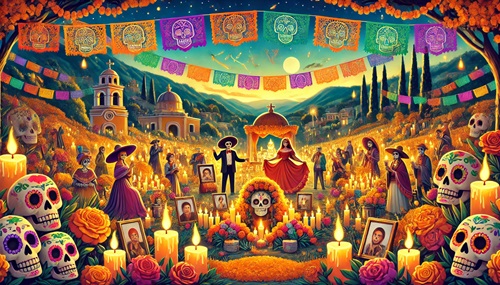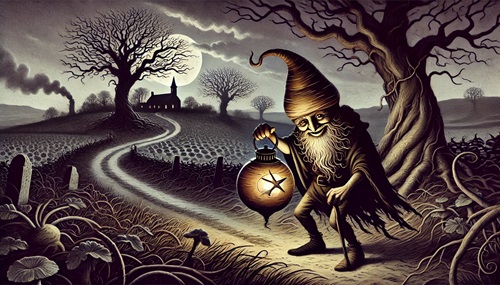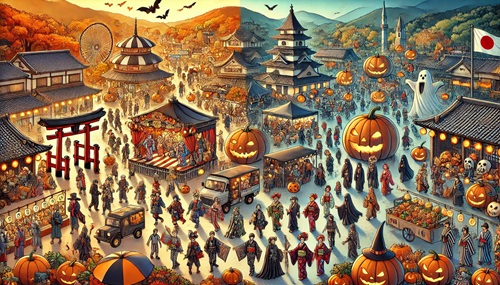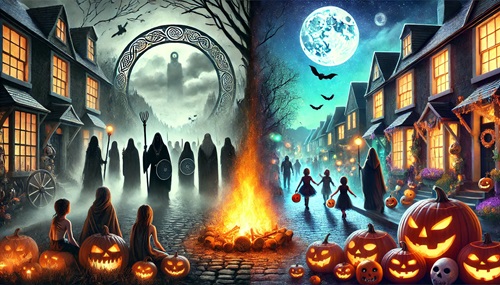One of the most enjoyed holidays around the world is Halloween. With its origins deeply rooted in anxiety cultural and religious traditions, it was contrastingly different from how it is celebrated today. Presently, it is associated with costumes, candy, and haunted houses. Still, Halloween origins trace back to century-old customs that have now evolved into the modern-day celebration we are familiar with. Let’s get into the history of Halloween and take a look at its culture. We’ll also answer some common queries like whether it’s a national holiday and what it has come to represent today.
The Origins of Halloween: From Samhain to All Hallows’ Eve
Halloween traces its origins more than 2,000 years ago to the ancient Celtic festival of Samhain, celebrated on October 31st. The Celts lived in regions now called Ireland, the UK, and Northern France. They believed it to be a night when the worlds of the living and the dead became intertwined. Samhain was also the time when the harvest had finished and winter was beginning, a season closely associated with death. To keep spirits away, people at this time lit bonfires and wore costumes to disguise themselves from any passing spirits.
The festivals, however, underwent a change with the spread of Christianity. Pope Gregory III declared November 1st as All Saints’ Day or All Hallows’ Day. The night preceding it became known as Halloween. The combination of these two traditions—Celtic and Christian—formed the basis of many of the modern Halloween traditions. These traditions include dressing in costumes and supernatural themes.

Where is Halloween Observed and Celebrated
Halloween has been observed in all parts of the world but with localized traditions established over the course of generations. Perhaps the most commercialized in the United States and Canada, Halloween has been popularized by such activities as trick-or-treating, costume parties, haunted houses, and pumpkin carving. Both children and adults go out to celebrate the spooky atmosphere with decorated homes.
In Mexico, Halloween overlaps with Día de los Muertos (Day of the Dead), a multi-day celebration honoring deceased loved ones. As much as they differ, both share the common thread of remembrance and the association with the spirit world. Other nations, including Ireland, the UK, and Australia, celebrate Halloween but with different traditions, including bonfires and communal gatherings.
Is Halloween a National Holiday?
Although Halloween is popular everywhere, in many countries of the world it is not considered a national holiday. In the United States, for example, Halloween is popular to a great extent but is not a national holiday. People do not get the day off from school or work. It’s not really a public holiday in Ireland either, although communities may hold special events.
In Mexico, as well as in parts of Latin America, the Day of the Dead, celebrated from October 31st to November 2nd, is more significant and, in some cases, a kind of public holiday with many gatherings and ceremonies to honor the deceased.

What does Halloween Celebrate
Generally, Halloween traditions represent death, spirits, and remembering. Halloween is believed to be a festival that marked the end of the harvest season and the start of the darker, colder months, thus bringing to mind ideas of death and spirits as part of the natural framework.
Costumes, for example, were based on the ancient Celtic practice of disguising oneself so that ghosts would not recognize him or her. Halloween decorations, such as skeletons, jack-o’-lanterns, and haunted houses, further reflect the themes of death and the supernatural. Also associated with jack-o’-lanterns is the Irish legend of a man named “Stingy Jack,” who tricked the devil and was damned to roam the earth with only a turnip carved out to serve as his lantern and light source, which had been given to him by the devil in the form of burning coal. Now, that tradition is preserved through the carving of pumpkins to form spooky faces.

Halloween in Modern Culture
In recent decades, Halloween has transitioned from a solemn observance to a rather lighter and more commercialized celebration. In the United States in particular, Halloween has been marketed as a festive, community-oriented holiday, whereby companies, costume designers, and retailers have capitalized on the festive atmosphere of Halloween, making it an enormous economic drive. This year, Halloween-related expenditures are expected to amount to more than billions of dollars in the United States alone. Halloween is trending around the world, with several countries beginning to embrace it in ways that fit well into their own local traditions. For instance, in Japan, Halloween became known as when the large costume parades and parties are and in Germany, Halloween is very famous as pumpkin festivals and spooky markets.
Conclusion
Halloween has come a long way, from its origins in the Celtic festival of Samhain to the vibrant, multi-faceted celebration it is today. Although it may not have become an officially recognized national holiday in most countries, the cultural significance of Halloween and the popular appeal it enjoys throughout the globe are not to be underestimated. From scary costumes to candy corn, Halloween has only shaped up over time due to historical traditions and modern-day fun.
Whether you’re planning to go trick-or-treating, host a Halloween party, or simply enjoy the spooky atmosphere, understanding the history of Halloween adds depth to this beloved holiday. As it spreads across different cultures and countries, the festival is truly a global Halloween celebration with centuries-old roots. So, what are your plans for Halloween, and how do you plan on celebrating it in 2024? Drop your ideas and plans in the comments, and let me know what you think about the Halloween Origins.




